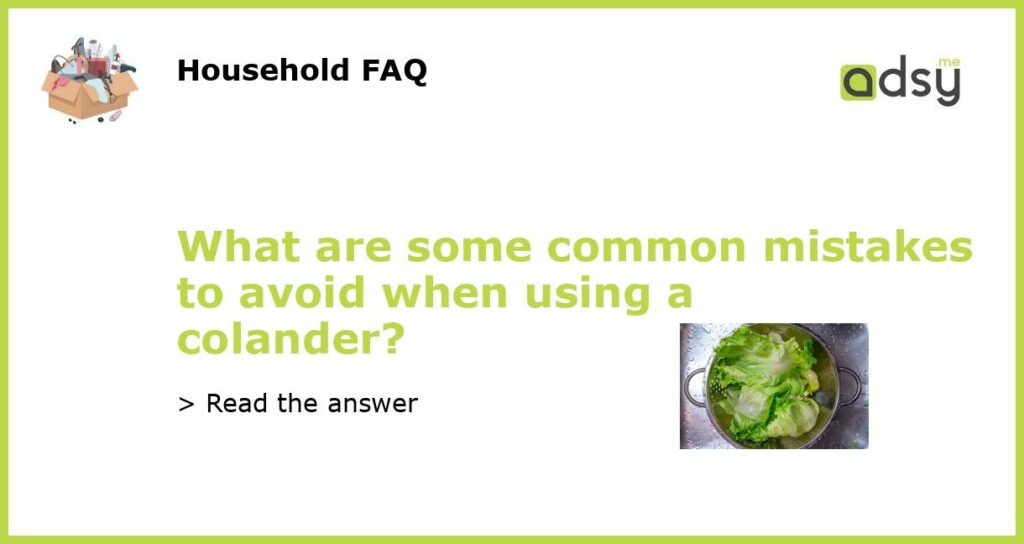Using a Colander Correctly: Mistakes to Avoid
A colander is a kitchen staple that is essential for draining pasta, vegetables, and fruits. However, many people make some common mistakes when using a colander that can affect the quality and taste of their food. In this article, we’ll take a look at some of these common mistakes and how to avoid them.
Not Choosing the Right Size
One of the most common mistakes people make when using a colander is not choosing the right size for their needs. A small colander may be fine for draining a can of beans or a handful of berries, but it won’t be large enough for draining pasta or a big batch of vegetables. On the other hand, a colander that is too big can be unwieldy and difficult to handle, making it hard to drain your food properly.
To avoid this mistake, choose a colander that is the right size for your needs. A medium-sized colander should be sufficient for most tasks, but if you frequently cook for a large family or like to make big batches of food, a larger colander may be more appropriate.
Not Shaking the Colander Properly
Another common mistake people make when using a colander is not shaking it properly to remove excess moisture from their food. When you drain pasta or vegetables, it’s important to give the colander a few good shakes to remove as much water as possible. If you don’t shake it properly, your food can become waterlogged and lose its texture and flavor.
To avoid this mistake, give your colander a few vigorous shakes to get rid of any excess water. You can also use a clean dish towel to gently blot your vegetables or pasta to remove any remaining moisture.
Rinsing Pasta After Draining
Many people make the mistake of rinsing their pasta with water after draining it in a colander. While it may seem like a good idea to rinse off any starch or residual sauce, this can actually make your pasta taste bland and soggy.
To avoid this mistake, simply drain your pasta in a colander and then immediately transfer it to your serving bowl or plate. If you are making a pasta salad or want to prevent your pasta from sticking together, you can toss it with a small amount of olive oil or butter while it’s still warm.
Overcrowding the Colander
Another common mistake is overcrowding your colander with too much food. When you try to drain too much food at once, it will take longer to remove the excess moisture, and your food may become overcooked or mushy.
To avoid this mistake, only fill your colander about two-thirds full to give your food enough room to drain properly. If you need to drain a large batch of food, it’s better to do it in smaller batches to ensure that everything is properly drained.
Using a Damaged Colander
Finally, it’s important to avoid using a damaged colander. If your colander has holes or cracks, it can leak water and make a mess in your kitchen. A damaged colander can also be dangerous if it breaks or falls apart while you are using it.
To avoid this mistake, inspect your colander regularly for any signs of wear and tear. If your colander is damaged, it’s time to replace it with a new one to ensure that your food stays safe and clean.






